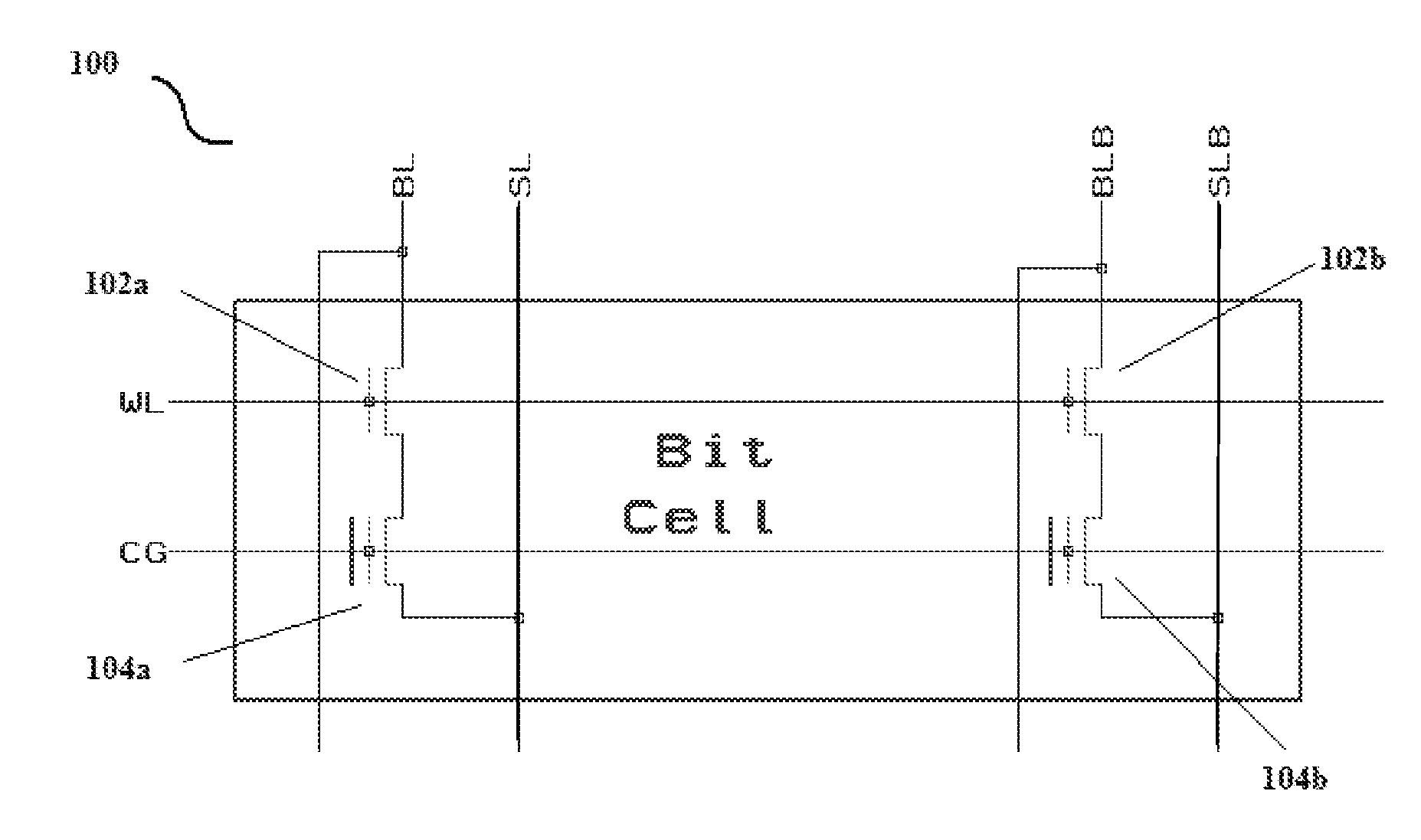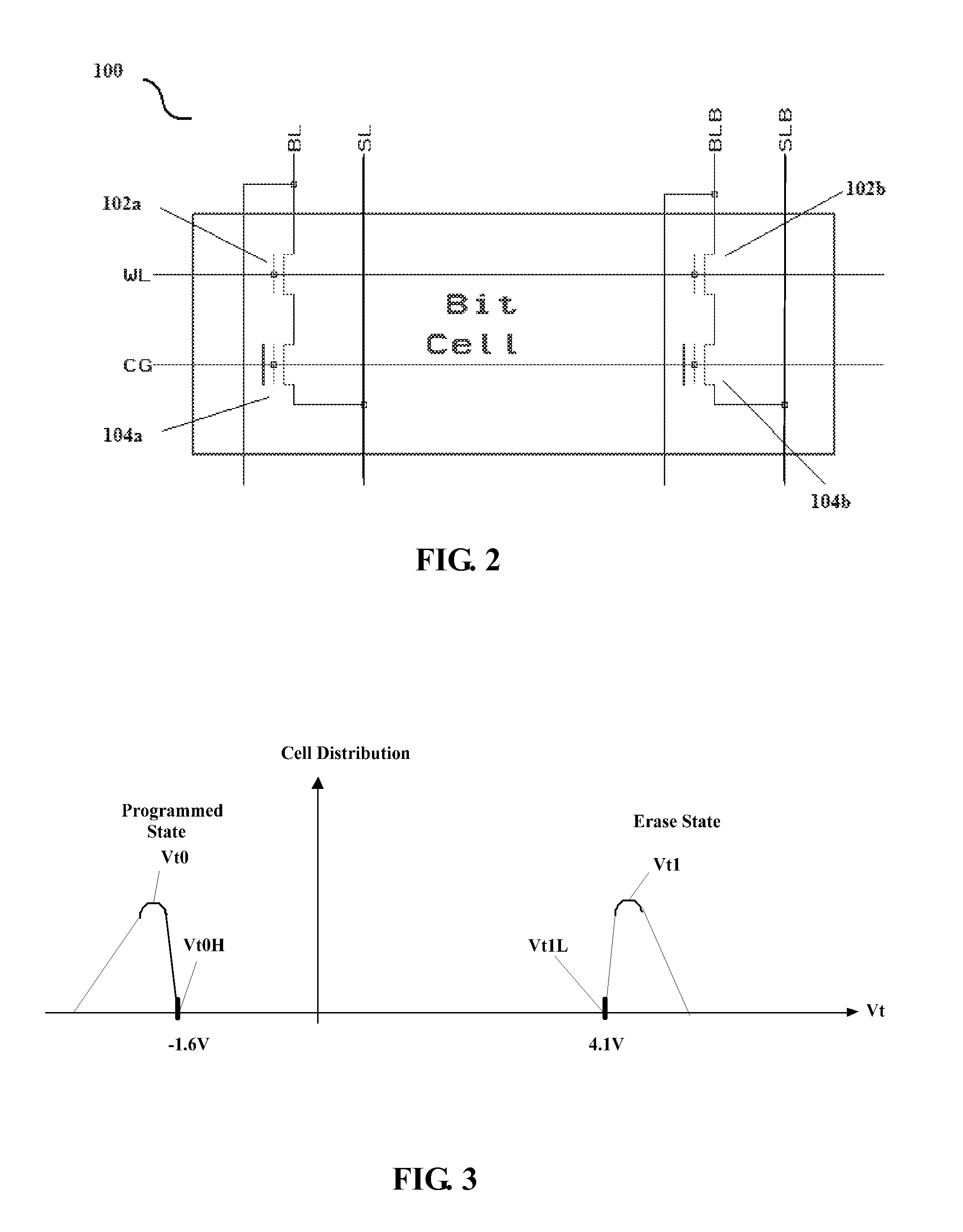Dram-like nvm memory array and sense amplifier design for high temperature and high endurance operation
a sense amplifier and nvm memory technology, applied in the field of circuit architecture of nonvolatile memory devices, can solve the problems of increasing vt-gap closure, increasing the risk of eeprom cells, and the design of traditional eeprom byte-alterable array and sense amplifiers has been proven to be no longer secure and valid to guarantee normal operation, etc., to achieve superior endurance cycles in byte and page units, improve threshold voltage sensing margin, and large silicon area
- Summary
- Abstract
- Description
- Claims
- Application Information
AI Technical Summary
Benefits of technology
Problems solved by technology
Method used
Image
Examples
Embodiment Construction
[0052]FIG. 1A shows a preferred embodiment of a unit circuit of a 2T FLOTOX-based EEPROM cell 10 for the 4T DRAM-like EEPROM cell array of the present invention. In a traditional 2T FLOTOX-based EEPROM cell, a drain node is connected to a metal bit line BL running in a vertical y-direction, a source line SL is running in a horizontal x-direction in parallel to a common word line WL and a common gate line CG running in the horizontal x-direction. In the 2T FLOTOX-based EEPROM cell of the present invention, the drain node is still connected to a metal BL running in a vertical y-direction but the SL is also running vertically in parallel with the BL in the y-direction. As a result, both BL and SL of each EEPROM cell of the present invention are running with different metal lines in the y-direction and are arranged perpendicular to WL and CG of the cell that are running in the horizontal x-direction.
[0053]As shown in FIG. 1A, each 2T EEPROM cell comprises two high voltage (HV) NMOS tran...
PUM
 Login to View More
Login to View More Abstract
Description
Claims
Application Information
 Login to View More
Login to View More - R&D
- Intellectual Property
- Life Sciences
- Materials
- Tech Scout
- Unparalleled Data Quality
- Higher Quality Content
- 60% Fewer Hallucinations
Browse by: Latest US Patents, China's latest patents, Technical Efficacy Thesaurus, Application Domain, Technology Topic, Popular Technical Reports.
© 2025 PatSnap. All rights reserved.Legal|Privacy policy|Modern Slavery Act Transparency Statement|Sitemap|About US| Contact US: help@patsnap.com



